Contribution of Arabic Medicine and Pharmacy to the Development of Health Care Protection in Bosnia and Herzegovina - the First Part
- PMID: 29284908
- PMCID: PMC5723183
- DOI: 10.5455/medarh.2017.71.364-372
Contribution of Arabic Medicine and Pharmacy to the Development of Health Care Protection in Bosnia and Herzegovina - the First Part
Abstract
The time interval from the 9th to the 13th century remained known as the "Golden period of the Arab science", and a significant place among the taught sciences are occupied by Medicine and Pharmacy. In the history of medicine, Islamic medicine, also known as Arabic medicine, refers to the science of medicine developed in the Islamic Golden Age, and written in Arabic Arabs were able to use their cultural and natural resources and trade links to contribute to the strong development of pharmacy. After the collapse of the Arab rule, the Arab territorial expanses and cultural heritage were taken over by the Turks. Although scientific progress in the Turkish period slowed down due to numerous unfavorable political-economic and other circumstances, thanks to the Turks, Arab culture and useful Islamic principles expanded to the territory of our homeland of Bosnia and Herzegovina. Significant role in the transfer of Arabic medical and pharmaceutical knowledge was also attributed to the Sephardic Jews who, with their arrival, continued to perform their attar activities, which were largely based on Arab achievements. However, insufficiently elaborated, rich funds of oriental medical and pharmaceutical handwriting testify that Oriental science has nurtured in these areas as well, and that the Arab component in a specific way was intertwined with other cultures and traditions of Bosnia and Herzegovina.
Keywords: Arabic medicine; Medicine; Pharmacy; great arabic physiacians.
Conflict of interest statement
• Conflict of interest: none declared.
Figures


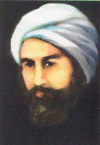
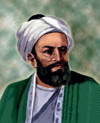
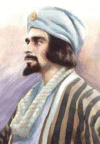

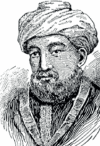
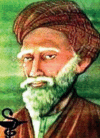


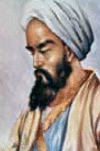



Similar articles
-
One Hundred Fifty Years of Organized Health Care Services in Bosnia and Herzegovina.Med Arch. 2018 Nov;72(5):374-388. doi: 10.5455/medarh.2018.72.374-388. Med Arch. 2018. PMID: 30524173 Free PMC article. Review.
-
Contribution of Arabic Medicine and Pharmacy to the Development of Health Care Protection in Bosnia and Herzegovina - the Second Part.Med Arch. 2017 Dec;71(6):439-448. doi: 10.5455/medarh.2017.71.439-448. Med Arch. 2017. PMID: 29416207 Free PMC article. Review.
-
Influence of Arabian Pharmacy on Diseases Tretament During Ottoman's Period in Bosnia and Herzegovina.Med Arch. 2017 Jun;71(3):219-225. doi: 10.5455/medarh.2017.71.219-225. Med Arch. 2017. PMID: 28974838 Free PMC article.
-
[Pharmacy and the great contribution of Arab-Islamic science to its development].Med Arh. 1997;51(1-2):47-50. Med Arh. 1997. PMID: 9324574 Croatian.
-
[Contribution of Persian physicians to the development of Islamic medicine].Med Arh. 1997;51(1-2):9-12. Med Arh. 1997. PMID: 9324581 Croatian.
Cited by
-
One Hundred Fifty Years of Organized Health Care Services in Bosnia and Herzegovina.Med Arch. 2018 Nov;72(5):374-388. doi: 10.5455/medarh.2018.72.374-388. Med Arch. 2018. PMID: 30524173 Free PMC article. Review.
-
Historical Contribution of Pharmaceutics to Botany and Pharmacognosy Development.Mater Sociomed. 2017 Dec;29(4):291-300. doi: 10.5455/msm.2017.29.291-300. Mater Sociomed. 2017. PMID: 29285002 Free PMC article. Review.
-
Contribution of Arabic Medicine and Pharmacy to the Development of Health Care Protection in Bosnia and Herzegovina - the Second Part.Med Arch. 2017 Dec;71(6):439-448. doi: 10.5455/medarh.2017.71.439-448. Med Arch. 2017. PMID: 29416207 Free PMC article. Review.
-
Algerian leishmaniasis history.J Parasit Dis. 2025 Mar;49(1):1-12. doi: 10.1007/s12639-024-01736-5. Epub 2024 Sep 13. J Parasit Dis. 2025. PMID: 39975627 Review.
-
Ancient herbal therapy: A brief history of Panax ginseng.J Ginseng Res. 2023 May;47(3):359-365. doi: 10.1016/j.jgr.2022.03.004. Epub 2022 Mar 23. J Ginseng Res. 2023. PMID: 37252279 Free PMC article. Review.
References
-
- Mašić I. Srednjevjekovna arapska medicina/Medieval Arabic Medicine. Sarajevo: Avicena; 2010. p. 296. ISBN:978-9958-720-40-6.
-
- Mašić I. Arapska medicina. Sarajevo: Avicena; 1994. p. 58.
-
- Mašić I, Riđanović Z, Kujundžić E. Ibn Sina - Avicena život i djelo. Sarajevo: Avicena; 1995. p. 148.
-
- Muminagic S, Masic I. The classics of Arabic medicine. Med Arh. 2010;64(4):254–6. - PubMed
-
- Mašić I. Klasici Arapsko-islamske medicine. Sarajevo: Avicena; 1995. p. 96.
Publication types
MeSH terms
LinkOut - more resources
Full Text Sources
Other Literature Sources
Medical
